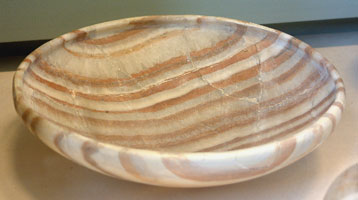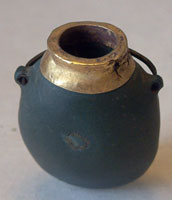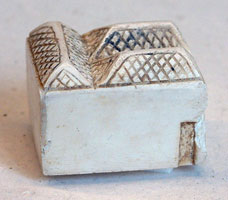The necropolis of Abu Rawash (Abu Rowash, Abu Roash, Abu Roach) lies around eight kilometres north of Giza. It is the location of the northernmost pyramid in Egypt (known as Lepsius Number One), the pyramid of Djedefre (also known as Djedefra or Radjedef) and around fifty mastabas (located one and a half kilometres from Djedefre’s pyramid).
Djedefre was the only pharaoh of the fourth dynasty to choose to build his pyramid there. We do not know why he made this decision but it is possible that there was an ideological reason for him abandoning Giza in favour of Abu Rawash. It is suggested that there was a feud between Djedefre and his father Khufu and that his successor and brother, Khafre, took the side of Khufu in returning to Giza to build his pyramid. However Menkaure (Khafre’s son) completed restoration work on the pyramid of Djedefre and there is no evidence to support the existence of a feud. Another more likely explanation is that the site was chosen because of its proximity to Heliopolis – the centre of the cult of Ra.

- Pyramid of Djedefre
- Causeway
- Northwest cemetery (Wadi Quarum)
- Quarry
- Cemetery F
- Lepsius Number One
Mastabas of Abu Rawash
The first burials in the area date to the First dynasty. There is a large Thinite necropolis at the site and a number of objects bearing the names of Hor aha and Den were found in the area.

Unlike the fourth dynasty mastabas of Giza which sit very close to the pyramids and seem to have been built to a plan in advance, the fourth dynasty necropolis at Abu Rawash (cemetery F) lies some distance from Djedefre’s pyramid and the mastabas seem to have been built to order and laid out in a more haphazard manner.

Unfortunately, the site has suffered a great deal of damage in antiquity and excavations in the early twentieth century were poorly organized and failed to leave adequate records, so, although much has been recovered from the site, it is not fully cataloged and our knowledge is patchy to say the least.

Most of the mastabas are composed of external walls made up of large blocks layered around a bedrock core with the upper sections filled in with loose masonry. On the east side there is a cult niche to the north and a L shaped chapel to the south. Some of the southern chapels have brick annexes to extend them. Many of the tombs are anonymous but some to bear the names of their owners and some artifacts have been recovered also bearing these names; for example an alabaster offering table dedicated to Hornit.

- F7: Nikaudja – “greatest of the ten of the South”
- F13: Hornit (Hor-Neith) -“king’s son of his body”
- F15: Nikau-Djedefre (Nykau Radjedef) – “king’s son of his body, sole companion of his father, director of the Palace”
- F19: Hekaf – “royal chamberlain, herdsman of the rekhyt (people), judge, boundary official”
Some tombs, such as F37, have inscriptions confirming that the owners were the sons of the king (or at least high officials or prominent nobles given the epithet “King’s son” as an honorific title), but, unfortunately, the name of the deceased is damaged or missing. Other mastabas confirm that the inhabitants were high officials, such as “director of the personnel in phyle” who was buried in F48, but again their names are unknown.
There are also a number of burials dating to the fifth and sixth dynasties and a smaller number dating to the Middle Kingdom.
Copyright J Hill 2008